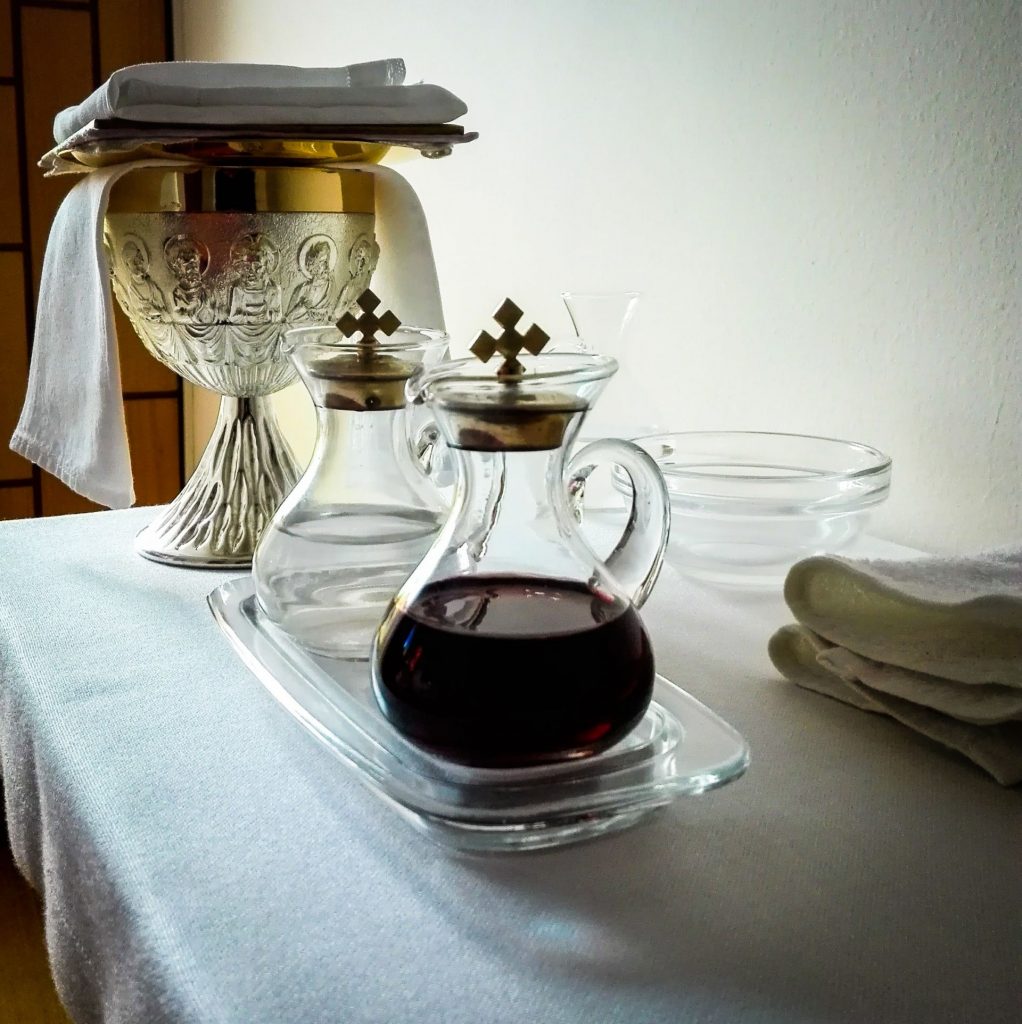
The Last Supper of Christ was a Passover Seder. A proper Seder dinner includes four “cups” of wine, something non-Jews would call “toasts” at particular moments in the retelling of the Exodus story. Jesus told them the wine was his blood during the third cup, called the “cup of redemption.” He did not serve them the fourth cup at all, because that one represents the fulfillment of the promise of entering the holy land. Instead he said,
For I tell you I will not drink again from the fruit of the vine until the kingdom of God comes” Luke 22:18.
They shared a common cup at their celebration, a practice many of the liturgical churches have preserved. Jewish Passover Seders today use individual wine glasses, but they are small – more like shot glasses with stems – so they can be emptied with a single toss. It is also traditional to “cut” the wine prior to serving it by pouring in a little water.
Kosher wine made in Israel (e.g. Golan Merlot 2016) is 14.5% alcohol. Before they had the means of supervising the production of wine by rabbis in America, they made an ersatz wine from boiled raisins that met kosher regulations. This wine was usually non-alcoholic, but not for religious reasons. Later, an American Jew developed the Concord grape, which grew well enough in New England to make a sweetened red wine similar to Manischewitz, a staple for Passover celebrations in North America today.
The American controversy over using fermented wine for communion services didn’t exist until the days of liquor prohibition in the 1930’s. Catholics also add a splash of water to the communion wine, but they don’t serve the Eucharist to children until they are about 8 years of age. American Protestants before prohibition reserved communion for those old enough to undertake a covenant relationship, which meant being old enough for marriage.
When the Roman soldier put his spear into Christ’s side, blood and water gushed out (John 19:34). This means the tip of the spear had to enter our Lord’s body on the left side below the ribs, passing upward through the lung into his heart. Jesus was in a state of cor pulmonale, or fluid congestion, in which the heart is ballooned with blood, and the lungs fill with water. Water and blood did not just pour out, it gushed.
The other place in our Bible that uses this expression was at the Rock at Rephidim, where Moses struck the rock with his staff and water gushed out. The spear was a staff with an iron point added to it, but the typology is solid. The gushing water from the Rock saved Israel from certain death in the heat of the desert. The mixture of blood and water from the side of Jesus saves us from certain death in the heat of hell.
“Sir,” the woman said, “you have nothing to draw with and the well is deep. Where can you get this living water? Are you greater than our father Jacob, who gave us the well and drank from it himself, as did also his sons and his livestock?” Jesus answered, “Everyone who drinks this water will be thirsty again, but whoever drinks the water I give them will never thirst. Indeed, the water I give them will become in them a spring of water welling up to eternal life” John 4:11-14.
The first of Jesus’ miracles was turning water into wine, but his greatest miracle was turning his body’s blood and water into the wine of communion for us. I don’t think it matters whether Christians use fermented wine or grape juice. We should probably not offer it to our little ones until they are ready to make covenant decisions. Even children benefit, however, from the rich imagery of Christ portrayed before them.